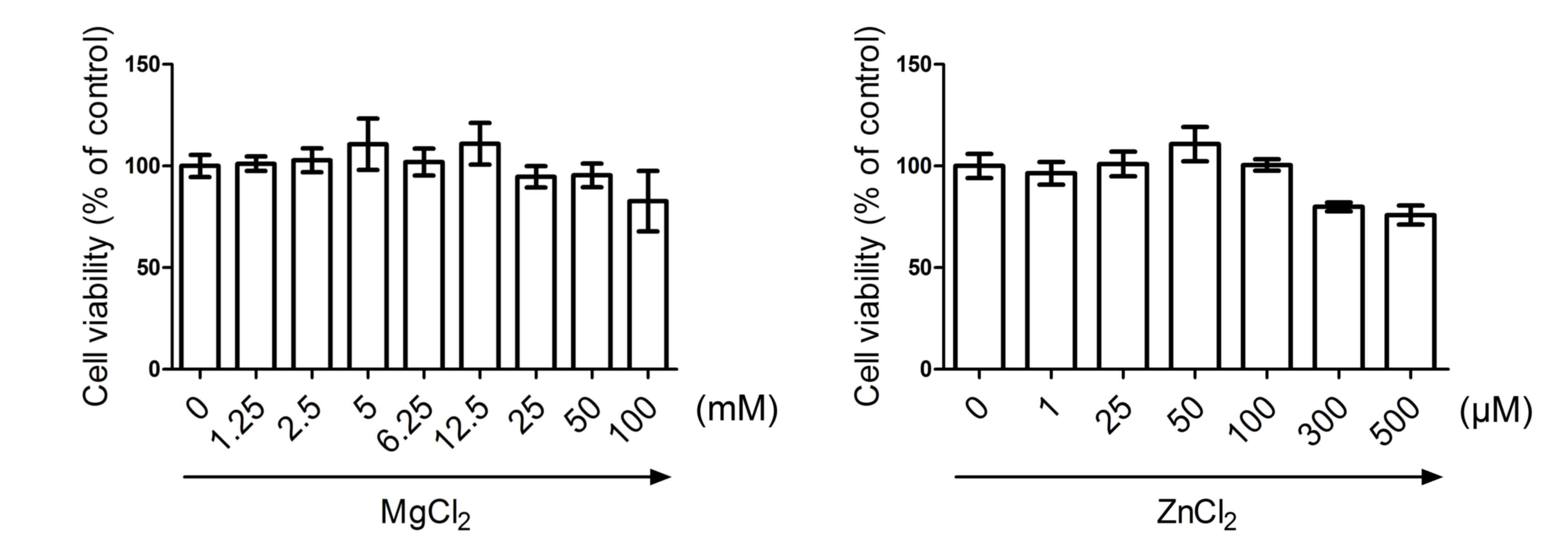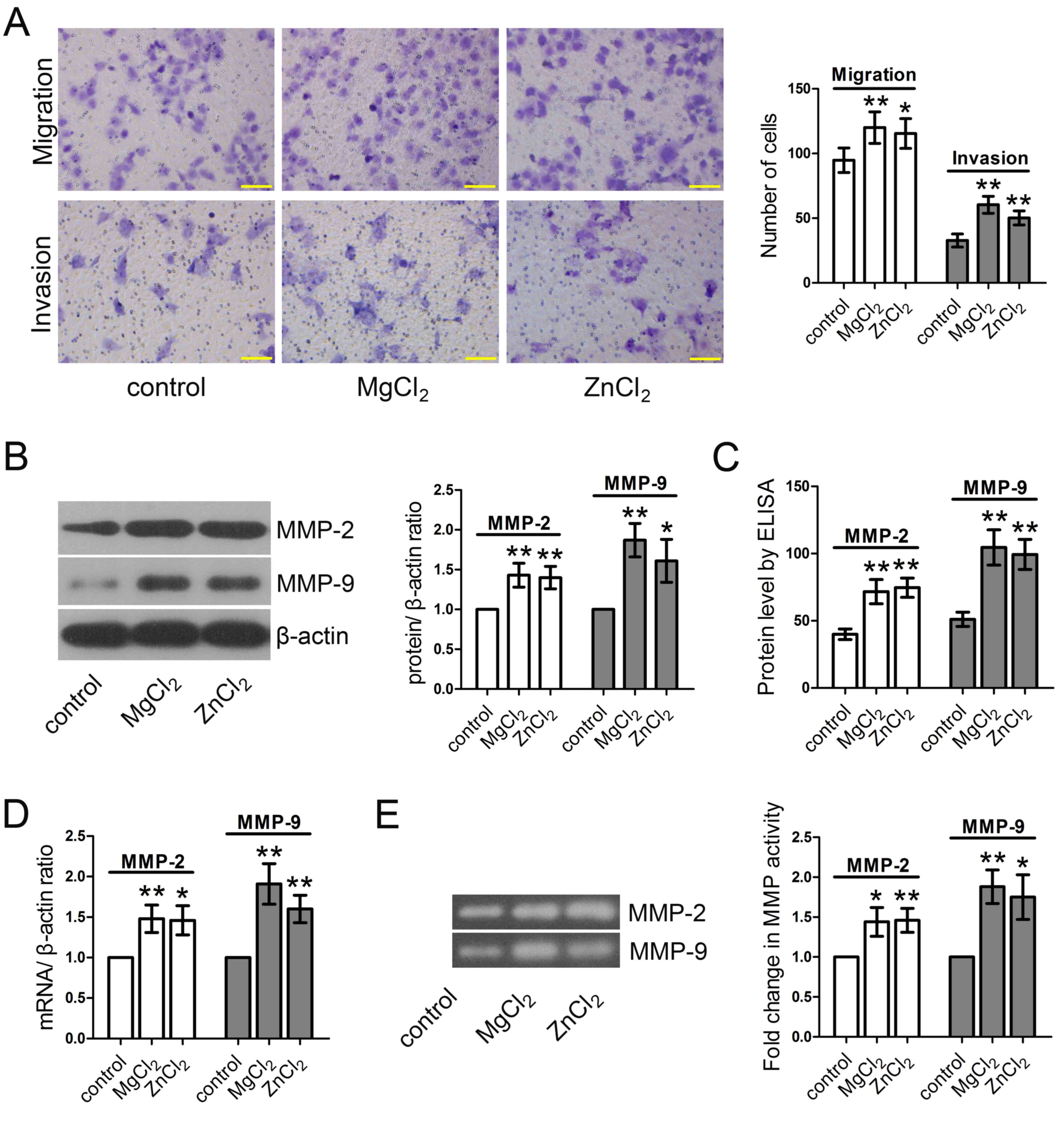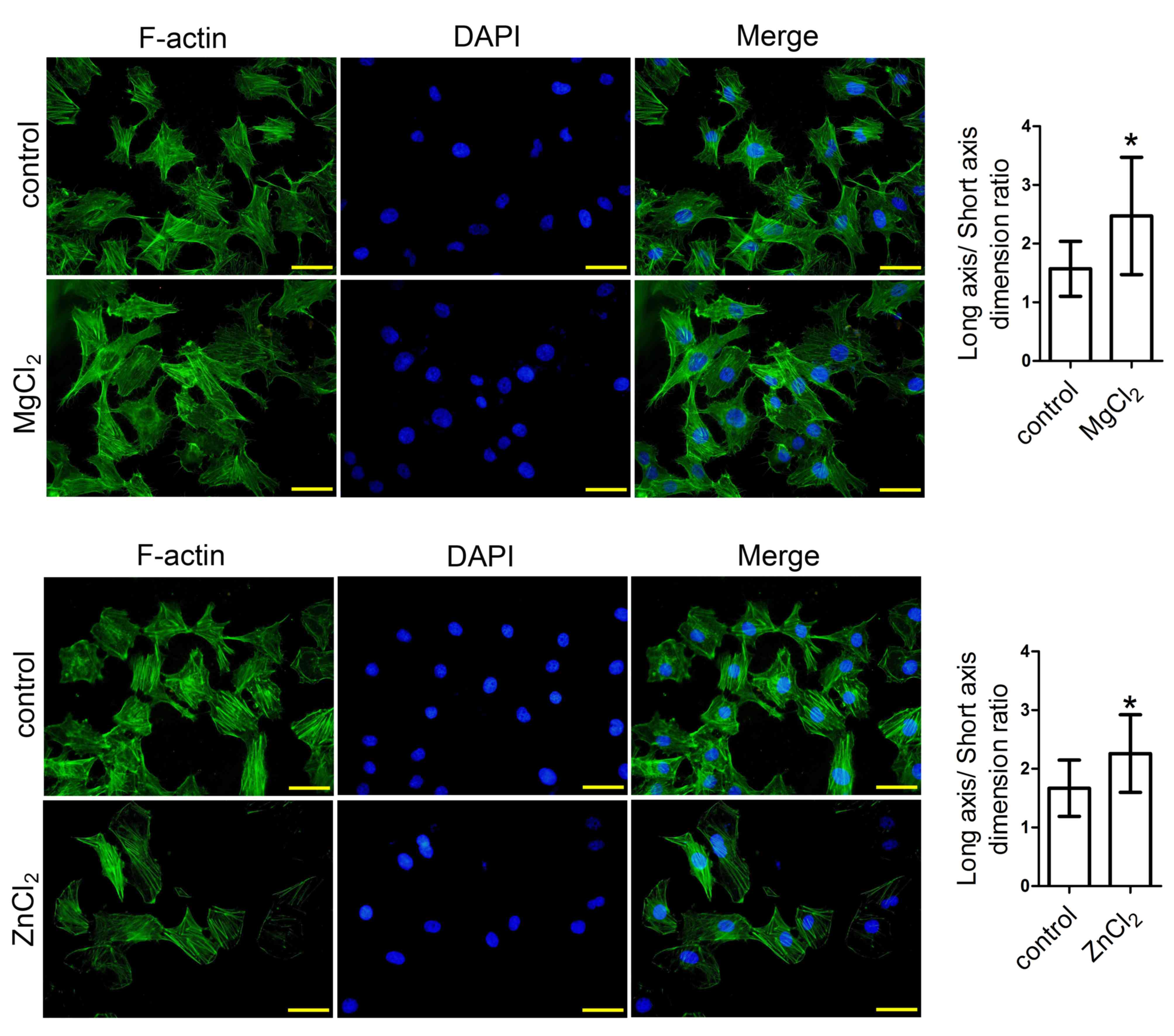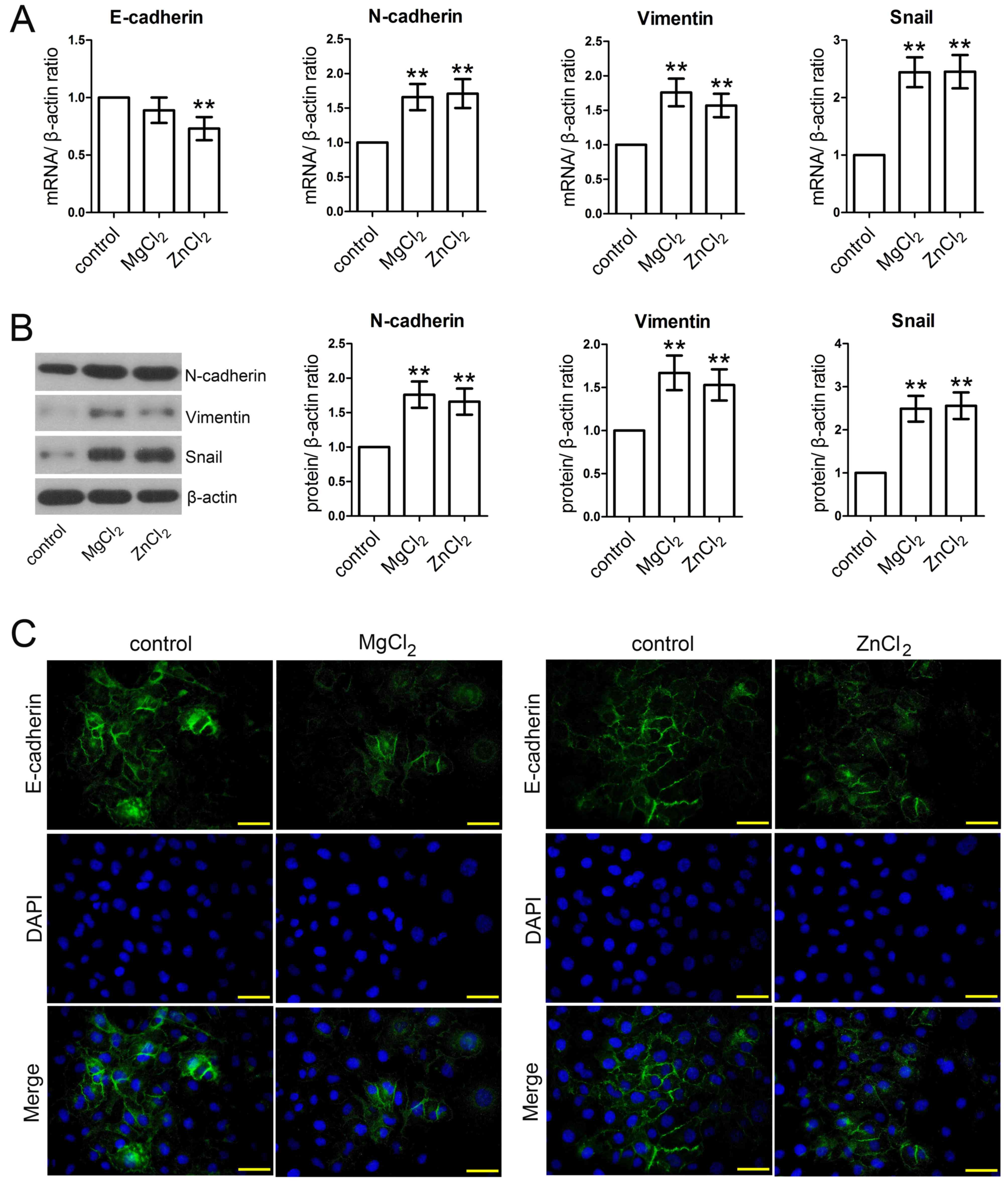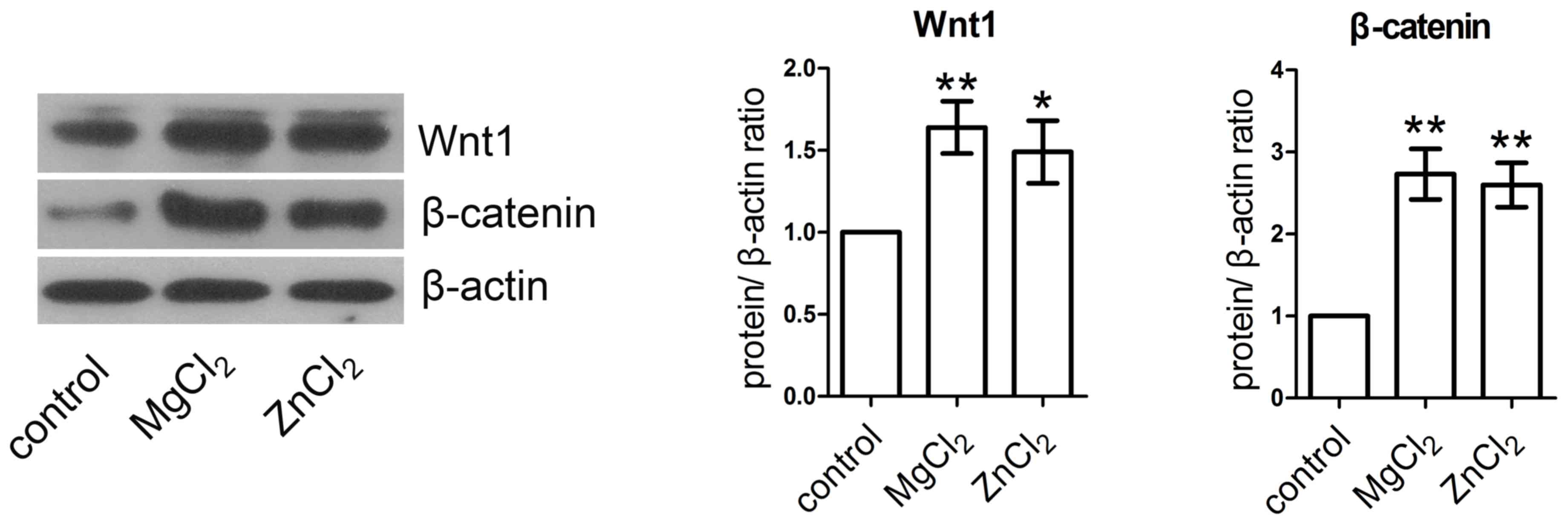|
1
|
Elshabrawy HA, Chen Z, Volin MV, Ravella
S, Virupannavar S and Shahrara S: The pathogenic role of
angiogenesis in rheumatoid arthritis. Angiogenesis. 18:433–448.
2015. View Article : Google Scholar : PubMed/NCBI
|
|
2
|
Srinivasan S, Chitalia V, Meyer RD,
Hartsough E, Mehta M, Harrold I, Anderson N, Feng H, Smith LE,
Jiang Y, et al: Hypoxia-induced expression of phosducin-like 3
regulates expression of VEGFR-2 and promotes angiogenesis.
Angiogenesis. 18:449–462. 2015. View Article : Google Scholar : PubMed/NCBI
|
|
3
|
Rodriguez-Caso L, Reyes-Palomares A,
Sánchez-Jiménez F, Quesada AR and Medina MÁ: What is known on
angiogenesis-related rare diseases? A systematic review of
literature. J Cell Mol Med. 16:2872–2893. 2012. View Article : Google Scholar : PubMed/NCBI
|
|
4
|
Kreuger J and Phillipson M: Targeting
vascular and leukocyte communication in angiogenesis, inflammation
and fibrosis. Nat Rev Drug Discov. 15:125–142. 2016. View Article : Google Scholar : PubMed/NCBI
|
|
5
|
Brauer R, Beck IM, Roderfeld M, Roeb E and
Sedlacek R: Matrix metalloproteinase-19 inhibits growth of
endothelial cells by generating angiostatin-like fragments from
plasminogen. BMC Biochem. 12:382011. View Article : Google Scholar : PubMed/NCBI
|
|
6
|
Schuermann A, Helker CS and Herzog W:
Metallothionein 2 regulates endothelial cell migration through
transcriptional regulation of vegfc expression. Angiogenesis.
18:463–475. 2015. View Article : Google Scholar : PubMed/NCBI
|
|
7
|
Kalluri R: Basement membranes: Structure,
assembly and role in tumour angiogenesis. Nat Rev Cancer.
3:422–433. 2003. View
Article : Google Scholar : PubMed/NCBI
|
|
8
|
Li P, Liu Y, Wang H, He Y, Wang X, He Y,
Lv F, Chen H, Pang X, Liu M, et al: PubAngioGen: A database and
knowledge for angiogenesis and related diseases. Nucleic Acids Res.
43:D963–D967. 2015. View Article : Google Scholar : PubMed/NCBI
|
|
9
|
Carmeliet P and Jain RK: Angiogenesis in
cancer and other diseases. Nature. 407:249–257. 2000. View Article : Google Scholar : PubMed/NCBI
|
|
10
|
Yu J, Yuan X, Liu Y, Zhang K, Wang J,
Zhang H and Liu F: Delayed administration of WP1066, an STAT3
inhibitor, ameliorates radiation-induced lung injury in mice. Lung.
194:67–74. 2016. View Article : Google Scholar : PubMed/NCBI
|
|
11
|
Inada M, Takita M, Yokoyama S, Watanabe K,
Tominari T, Matsumoto C, Hirata M, Maru Y, Maruyama T, Sugimoto Y,
et al: Direct melanoma cell contact induces stromal cell autocrine
prostaglandin E2-EP4 receptor signaling that drives tumor growth,
angiogenesis and metastasis. J Biol Chem. 290:29781–29793. 2015.
View Article : Google Scholar : PubMed/NCBI
|
|
12
|
Vormann J: Magnesium: Nutrition and
metabolism. Mol Aspects Med. 24:27–37. 2003. View Article : Google Scholar : PubMed/NCBI
|
|
13
|
Yang L, Arora K, Beard WA, Wilson SH and
Schlick T: Critical role of magnesium ions in DNA polymerase beta's
closing and active site assembly. J Am Chem Soc. 126:8441–8453.
2004. View Article : Google Scholar : PubMed/NCBI
|
|
14
|
Peralta FA and Huidobro-Toro JP: Zinc as
allosteric ion channel modulator: Ionotropic receptors as
metalloproteins. Int J Mol Sci. 17:pii: E1059. 2016. View Article : Google Scholar : PubMed/NCBI
|
|
15
|
Mostaed E, Vedani M, Hashempour M and
Bestetti M: Influence of ECAP process on mechanical and corrosion
properties of pure Mg and ZK60 magnesium alloy for biodegradable
stent applications. Biomatter. 4:e282832014. View Article : Google Scholar : PubMed/NCBI
|
|
16
|
Sheffer M, Simon AJ, Jacob-Hirsch J,
Rechavi G, Domany E, Givol D and D'Orazi G: Genome-wide analysis
discloses reversal of the hypoxia-induced changes of gene
expression in colon cancer cells by zinc supplementation.
Oncotarget. 2:1191–1202. 2011. View Article : Google Scholar : PubMed/NCBI
|
|
17
|
Ren N, Li J, Qiu J, Sang Y, Jiang H,
Boughton RI, Huang L, Huang W and Liu H: Nanostructured titanate
with different metal ions on the surface of metallic titanium: A
facile approach for regulation of rBMSCs fate on titanium implants.
Small. 10:3169–3180. 2014. View Article : Google Scholar : PubMed/NCBI
|
|
18
|
Muñoz-Chápuli R, Quesada AR and Medina
Angel M: Angiogenesis and signal transduction in endothelial cells.
Cell Mol Life Sci. 61:2224–2243. 2004. View Article : Google Scholar : PubMed/NCBI
|
|
19
|
Huang L, Wang X, Wen C, Yang X, Song M,
Chen J, Wang C, Zhang B, Wang L, Iwamoto A, et al: Hsa-miR-19a is
associated with lymph metastasis and mediates the TNF-α induced
epithelial-to-mesenchymal transition in colorectal cancer. Sci Rep.
5:133502015. View Article : Google Scholar : PubMed/NCBI
|
|
20
|
Brito RB, Malta CS, Souza DM, Matheus LH,
Matos YS, Silva CS, Ferreira JM, Nunes VS, França CM and Dellê H:
1-Methyl-D-Tryptophan potentiates TGF-β-induced
epithelial-mesenchymal transition in T24 human bladder cancer
cells. PLoS One. 10:e01348582015. View Article : Google Scholar : PubMed/NCBI
|
|
21
|
Guo Q, Ning F, Fang R, Wang HS, Zhang G,
Quan MY, Cai SH and Du J: Endogenous Nodal promotes melanoma
undergoing epithelial-mesenchymal transition via Snail and Slug in
vitro and in vivo. Am J Cancer Res. 5:2098–2112. 2015.PubMed/NCBI
|
|
22
|
Zhi Y, Mou Z, Chen J, He Y, Dong H, Fu X
and Wu Y: B7H1 expression and epithelial-To-Mesenchymal transition
phenotypes on colorectal cancer stem-like cells. PLoS One.
10:e01355282015. View Article : Google Scholar : PubMed/NCBI
|
|
23
|
Zhang YQ, Wei XL, Liang YK, Chen WL, Zhang
F, Bai JW, Qiu SQ, Du CW, Huang WH and Zhang GJ: Over-expressed
twist associates with markers of epithelial mesenchymal transition
and predicts poor prognosis in breast cancers via ERK and Akt
activation. PLoS One. 10:e01358512015. View Article : Google Scholar : PubMed/NCBI
|
|
24
|
Cohen EN, Gao H, Anfossi S, Mego M, Reddy
NG, Debeb B, Giordano A, Tin S, Wu Q, Garza RJ, et al: Inflammation
mediated metastasis: Immune induced epithelial-To-Mesenchymal
transition in inflammatory breast cancer cells. PLoS One.
10:e01327102015. View Article : Google Scholar : PubMed/NCBI
|
|
25
|
Cheng HW, Chen YF, Wong JM, Weng CW, Chen
HY, Yu SL, Chen HW, Yuan A and Chen JJ: Cancer cells increase
endothelial cell tube formation and survival by activating the
PI3K/Akt signalling pathway. J Exp Clin Cancer Res. 36:272017.
View Article : Google Scholar : PubMed/NCBI
|
|
26
|
Jiang S, Li Y, Lin T, Yuan L, Li Y, Wu S,
Xia L, Shen H and Lu J: IL-35 inhibits angiogenesis through
VEGF/Ang2/Tie2 pathway in rheumatoid arthritis. Cell Physiol
Biochem. 40:1105–1116. 2016. View Article : Google Scholar : PubMed/NCBI
|
|
27
|
Livak KJ and Schmittgen TD: Analysis of
relative gene expression data using real-time quantitative PCR and
the 2(-Delta Delta C(T)) Method. Methods. 25:402–408. 2001.
View Article : Google Scholar : PubMed/NCBI
|
|
28
|
Li C, Zhou Y, Peng X, Du L, Tian H, Yang
G, Niu J and Wu W: Sulforaphane inhibits invasion via activating
ERK1/2 signaling in human glioblastoma U87MG and U373MG cells. PLoS
One. 9:e905202014. View Article : Google Scholar : PubMed/NCBI
|
|
29
|
Awasthi N, Wang-Su ST and Wagner BJ:
Downregulation of MMP-2 and −9 by proteasome inhibition: A possible
mechanism to decrease LEC migration and prevent posterior capsular
opacification. Invest Ophthalmol Vis Sci. 49:1998–2003. 2008.
View Article : Google Scholar : PubMed/NCBI
|
|
30
|
Gialeli C, Theocharis AD and Karamanos NK:
Roles of matrix metalloproteinases in cancer progression and their
pharmacological targeting. FEBS J. 278:16–27. 2011. View Article : Google Scholar : PubMed/NCBI
|
|
31
|
Huang ST, Yang RC, Wu HT, Wang CN and Pang
JH: Zinc-chelation contributes to the anti-angiogenic effect of
ellagic acid on inhibiting MMP-2 activity, cell migration and tube
formation. PLoS One. 6:e189862011. View Article : Google Scholar : PubMed/NCBI
|
|
32
|
Hong BZ, Kang HS, So JN, Kim HN, Park SA,
Kim SJ, Kim KR and Kwak YG: Vascular endothelial growth factor
increases the intracellular magnesium. Biochem Biophys Res Commun.
347:496–501. 2006. View Article : Google Scholar : PubMed/NCBI
|
|
33
|
Bernardini D, Nasulewic A, Mazur A and
Maier JA: Magnesium and microvascular endothelial cells: A role in
inflammation and angiogenesis. Front Biosci. 10:1177–1182. 2005.
View Article : Google Scholar : PubMed/NCBI
|
|
34
|
Takatani-Nakase T, Matsui C, Maeda S,
Kawahara S and Takahashi K: High glucose level promotes migration
behavior of breast cancer cells through zinc and its transporters.
PLoS One. 9:e901362014. View Article : Google Scholar : PubMed/NCBI
|
|
35
|
Guarino M: Epithelial-mesenchymal
transition and tumour invasion. Int J Biochem Cell Biol.
39:2153–2160. 2007. View Article : Google Scholar : PubMed/NCBI
|
|
36
|
Thiery JP, Acloque H, Huang RY and Nieto
MA: Epithelial-mesenchymal transitions in development and disease.
Cell. 139:871–890. 2009. View Article : Google Scholar : PubMed/NCBI
|
|
37
|
Zhang Q, Liu LN, Yong Q, Deng JC and Cao
WG: Intralesional injection of adipose-derived stem cells reduces
hypertrophic scarring in a rabbit ear model. Stem Cell Res Ther.
6:1452015. View Article : Google Scholar : PubMed/NCBI
|
|
38
|
Mori M, Nakagami H, Koibuchi N, Miura K,
Takami Y, Koriyama H, Hayashi H, Sabe H, Mochizuki N, Morishita R
and Kaneda Y: Zyxin mediates actin fiber reorganization in
epithelial-mesenchymal transition and contributes to endocardial
morphogenesis. Mol Biol Cell. 20:3115–3124. 2009. View Article : Google Scholar : PubMed/NCBI
|
|
39
|
Kim JH, Hwang YJ, Han SH, Lee YE, Kim S,
Kim YJ, Cho JH, Kwon KA, Kim JH and Kim SH: Dexamethasone inhibits
hypoxia-induced epithelial-mesenchymal transition in colon cancer.
World J Gastroenterol. 21:9887–9899. 2015. View Article : Google Scholar : PubMed/NCBI
|
|
40
|
Pang L, Li Q, Wei C, Zou H, Li S, Cao W,
He J, Zhou Y, Ju X, Lan J, et al: TGF-β1/Smad signaling pathway
regulates epithelial-to-mesenchymal transition in esophageal
squamous cell carcinoma: In vitro and clinical analyses of cell
lines and nomadic Kazakh patients from northwest Xinjiang, China.
PLoS One. 9:e1123002014. View Article : Google Scholar : PubMed/NCBI
|
|
41
|
Xishan Z, Ziying L, Jing D and Gang L:
MicroRNA-320a acts as a tumor suppressor by targeting BCR/ABL
oncogene in chronic myeloid leukemia. Sci Rep. 5:124602015.
View Article : Google Scholar : PubMed/NCBI
|
|
42
|
Chen L, Jian W, Lu L, Zheng L, Yu Z and
Zhou D: Elevated expression of E-cadherin in primary breast cancer
and its corresponding metastatic lymph node. Int J Clin Exp Med.
8:11752–11758. 2015.PubMed/NCBI
|
|
43
|
Wang YL, Zhao XM, Shuai ZF, Li CY, Bai QY,
Yu XW and Wen QT: Snail promotes epithelial-mesenchymal transition
and invasiveness in human ovarian cancer cells. Int J Clin Exp Med.
8:7388–7393. 2015.PubMed/NCBI
|
|
44
|
Liu CY, Lin HH, Tang MJ and Wang YK:
Vimentin contributes to epithelial-mesenchymal transition cancer
cell mechanics by mediating cytoskeletal organization and focal
adhesion maturation. Oncotarget. 6:15966–15983. 2015. View Article : Google Scholar : PubMed/NCBI
|
|
45
|
Mendez MG, Kojima S and Goldman RD:
Vimentin induces changes in cell shape, motility, and adhesion
during the epithelial to mesenchymal transition. FASEB J.
24:1838–1851. 2010. View Article : Google Scholar : PubMed/NCBI
|
|
46
|
Xiao L, Kovac S, Chang M, Shulkes A,
Baldwin GS and Patel O: Zinc ions upregulate the hormone gastrin
via an E-box motif in the proximal gastrin promoter. J Mol
Endocrinol. 52:29–42. 2013. View Article : Google Scholar : PubMed/NCBI
|
|
47
|
Liu Y, Gai L, Liu J, Cui Y, Zhang Y and
Feng J: Expression of poly(C)-binding protein 1 (PCBP1) in NSCLC as
a negative regulator of EMT and its clinical value. Int J Clin Exp
Pathol. 8:7165–7172. 2015.PubMed/NCBI
|
|
48
|
Scheel C, Eaton EN, Li SH, Chaffer CL,
Reinhardt F, Kah KJ, Bell G, Guo W, Rubin J, Richardson AL and
Weinberg RA: Paracrine and autocrine signals induce and maintain
mesenchymal and stem cell states in the breast. Cell. 145:926–940.
2011. View Article : Google Scholar : PubMed/NCBI
|
|
49
|
Elsarraj HS, Hong Y, Valdez KE, Michaels
W, Hook M, Smith WP, Chien J, Herschkowitz JI, Troester MA, Beck M,
et al: Expression profiling of in vivo ductal carcinoma in situ
progression models identified B cell lymphoma-9 as a molecular
driver of breast cancer invasion. Breast Cancer Res. 17:1282015.
View Article : Google Scholar : PubMed/NCBI
|















